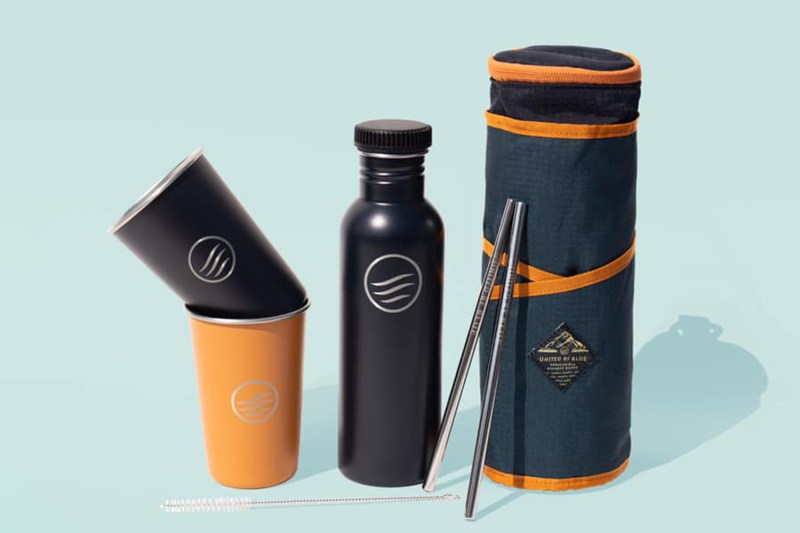
As you read this, two continent-sized expanses of plastic float placidly in the Pacific Ocean. Trash moves between them on an interstate-like current, and every day 38 million more pounds make its way into the saltwater. Fisheries are nosediving, beaches look more and more like garage sales instead of postcards, and Flipper was harpooned by a Japanese whaler. And yet against this seemingly hopeless situation, United By Blue , a Philadelphia-based outdoor clothing brand, is baling water from a figurative sinking ship with a bigger and bigger bucket while simultaneously trying to recruit others to do the same before the whole thing goes down.
Meet The Founders of United Blue
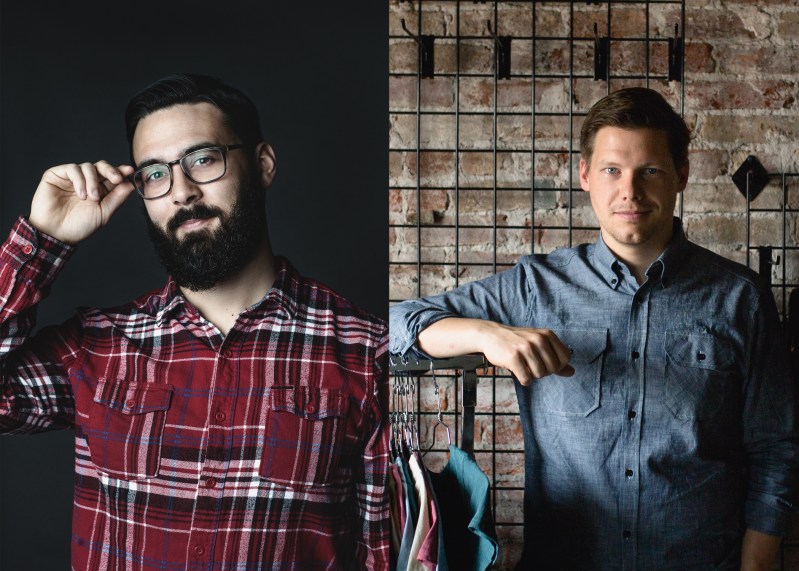
Mike Cangi, with fellow cofounder Brian Linton, uses that far-looking, aspirational rhetoric that usually precedes a sex scandal. But the company’s moves have always been hyper local when examined with a close-enough lens. Linton spent his childhood in Southeast Asia, seeing firsthand the effect of polluted oceans and trash-strewn beaches, and Cangi grew up surfing Philadelphia’s nearby Jersey Shore. With their first business, which preceded UBB, the pair donated five percent of the company’s profits to ocean conservancy, which vanished like a drop of water in, well, the ocean. “It was really hard to measure, to feel like we were making a difference,” Cangi says. “We wanted to get our hands dirty, literally and figuratively, and do our own good work.”
“We are all connected by the world’s water,” says cofounder and United By Blue brand director Mike Cangi, sounding very much like an aquatic version of a yoga instructor. “Every body of water is within our scope.”
So in 2010, the pair founded United By Blue. While the company’s desired effect of ocean conservancy may have been similar to the first business’s iteration, its model was radically different. Rather than writing a check and adding a blurb to its website, the company instead adopted the cause in-house, internalizing waterway cleanup and preservation by hiring the personnel themselves. Of course, volunteers have been critical to its core mission — over 13,000 have given time in 300 events across the 48 lower States — and the company also funds large-scale cleanups executed by professionals with specialized equipment in remote and sometimes dangerous locations. (To date, its collective efforts have netted more than 3.5 million pounds of trash, and it continues to pledge that for every product sold, one pound of trash will be removed from local waterways.) But UBB’s initiatives start in its Philly office by employees whose job descriptions read more like Greenpeace than green space.
How Does Trash Get Into Our Water?
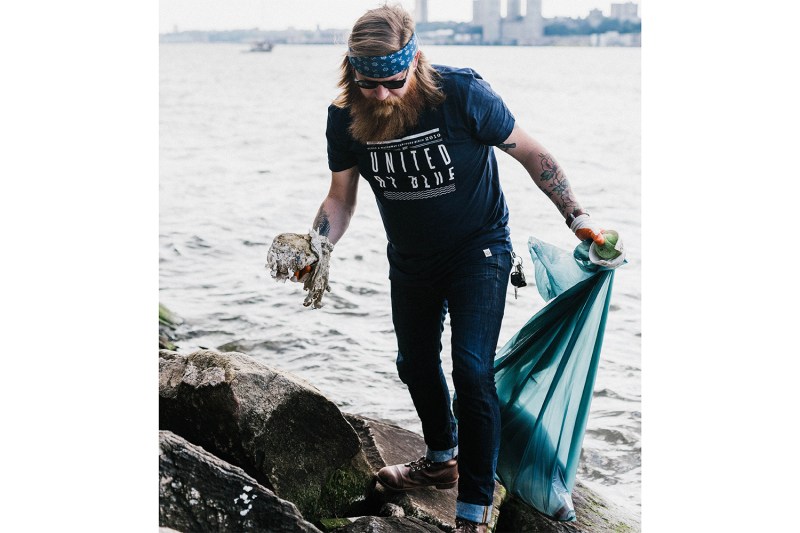
The issue the company has targeted is immense and multi-faceted. It’s not like each day a single, massive barge upends a cache of trash dump-truck-style. Rather, much of it spawns from densely populated areas where disposable plastics figuratively roll downhill. A one-liter bottle, empty, is blown into a street, which flushes into a creek, which flows into a river, which drains into the ocean, where it swirls into a Texas-sized mass of plastics. Single-use conveniences like styrofoam cups are a huge issue, as they break into smaller pieces after baking in the open ocean under sunlight and a briny breeze (a process called photodegradation). Smaller and smaller, they become more and more difficult to remove.
In May 2020, Dunkin’ transitioned the last of its stores around the world from polystyrene coffee cups. Cangi and his company rejoiced; they and their volunteers had seen the Boston-based company’s trash at almost all of its cleanups. But the replacement of polystyrene to double-walled paper? “Yes, it’s still a disposable. Yes, I would still love [Dunkin’ customers] to bring a United By Blue reusable ,” Cangi says. “But that’s progress.”
United By Blue and Environment America Collaboration
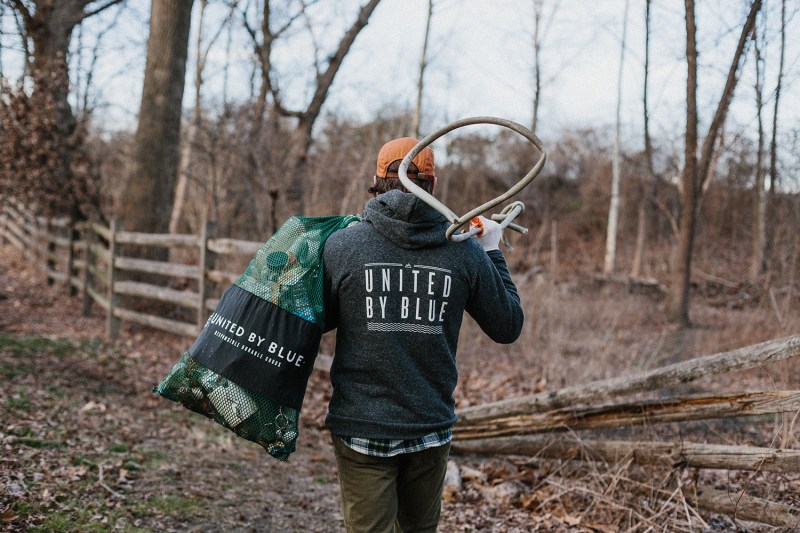
“Progress” is what you have to cling to when the 10-year sum of all your company’s efforts is dwarfed by a single day of the world’s ocean trash. For that reason, United By Blue is also investing in education, integrating it into its cleanup events and its products themselves, which tell the brand story and the overarching issues. You buy a reusable cup; you and your barista communicate. A bison-fur jacket proves that natural fibers can handle the worse winter weather; you tell a friend.
“It’s not just this Band-Aid to the problem, picking up trash. It has to be about the education and spreading the awareness about the issues that are causing this pollution in the first place,” Cangi says. “Eventually, we need to stop it upstream.”
“They have a broader base, and they use that network to advertise this,” says Kristine Oblock, the Colorado-based clean water federal field director of Environment America, of UBB. While Oblock’s organization has a professional relationship with the brand, it’s in her own personal life, in which she’s helped organize cleanups along the South Platte River over the last year, where she’s seen the biggest impact. By partnering with it and likeminded Patagonia, she’s has witnessed greater turnout while gaining increased resources like gloves and bags. Alone, her organization would have struggled to reach as wide a coalition. “They don’t have to do this,” she adds. “They choose to do this.”
As United By Blue’s customer base expands, so does its message, and with it, its mission’s reach. In 2020, the company launched a third prong to its core model of America-first local waterway cleanups and large-scale retrieval. While limited by worldwide COVID complications, the company’s fledgling international efforts were effective in the Philippines, the former home of cofounder Linton. Thirty thousand pounds of junk was pulled out, and greater international plans remain key to the company’s future strategy. Of course, as it opens these new areas, a host of logistical problems crops up, from relationships with local governments to something as basic as where to put the trash after it’s retrieved from the ocean. The latter can’t be overlooked; Cangi says the main reason these areas have become so polluted is because there simply aren’t proper ways to dispose of garbage. “There are some crazy challenges with this,” he adds, “but as we learn, we’ll be able to expand even more.”
With every year, United By Blue has targeted more aggressive goals, and 2021 is no different. It aims to collect over almost 1.1 million pounds of garbage from the U.S. and around the world this year, a 10% jump from the preceding. A sub-goal of almost a quarter million pounds is targeted for the Philippines alone, and the company is also in talks with Indian officials for expansion into the Ganges River and other highly polluted bodies of water near human centers. “You just got to follow the population” Cangi says. “It’s not coming from the animals. It’s coming from people.”
United By Blue and the BLM Social Movement
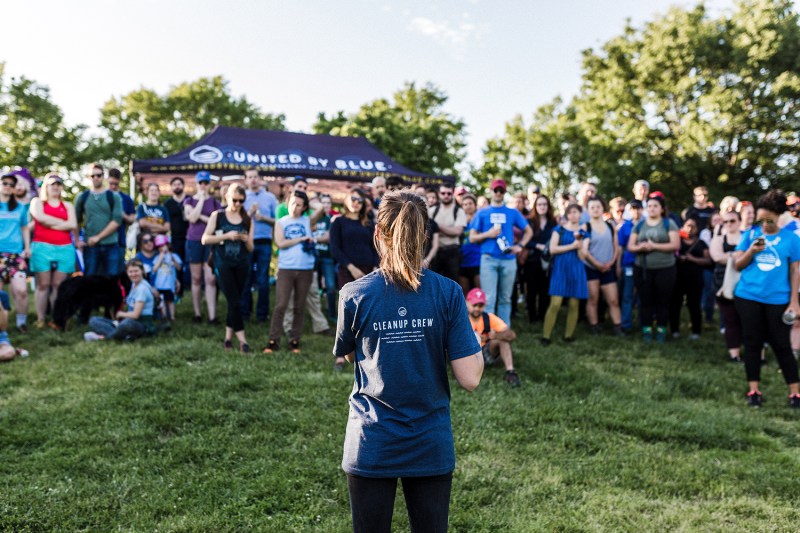
The company has also made bold commitments following the Black Lives Matter protests across the U.S. in 2020. In addition to four- and five-figure monetary support to the NAACP, Colour the Trails, Black Girls Trekkin’, and Urban Roots, it also pledged to work alongside BIPOC communities in its photo shoots and social media partnerships, with a goal to meet or exceed two-thirds of its models.
But the reality is that United By Blue’s individual efforts, while admirable, will never be enough. Its only hope is that as it rallies others to the cause, the collective effort may be.
Cangi gets nostalgic when thinking back to the company’s first year. In the same week as it began selling its first t-shirts, it hosted its first cleanup at Bartram’s Garden, a 50-acre park and National Historic Landmark on the banks of the Lower Schuylkill River in Philadelphia. It became a frequent site for events over that first year, and with only a handful of people, they’d amass as much as 2,000 pounds of trash and tires every time. Since then, they continue to go back as a kind of anniversary-slash-local-initiative-slash-kickoff to collections around the country and the world.
But something has changed.
Of late, with as many as 200 to 300 people scouring the grounds for garbage, the company might retrieve a pound per person. “There is less,” Cangi says. “When you have 200 people and they all can only come back with a pound of trash, that’s progress.”
How You Can Support
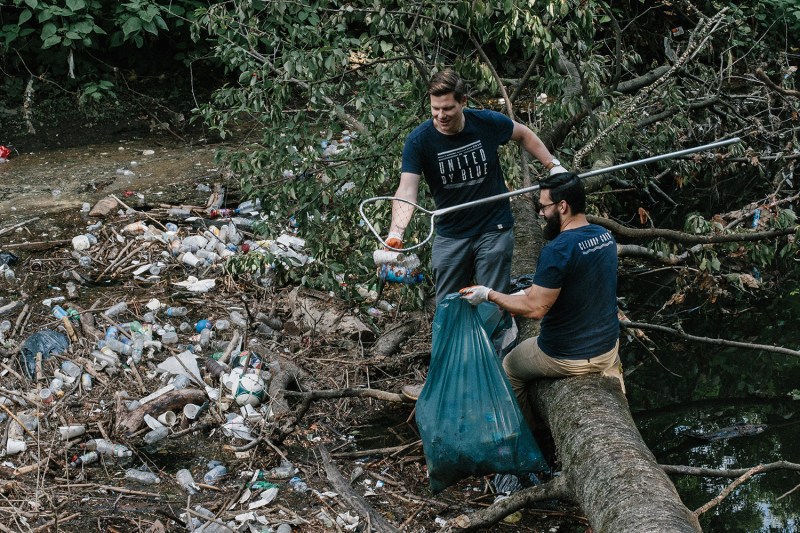
The culture around Philadelphia and indeed around the U.S. is changing. Plastic straws are being phased out; reusable mugs are more and more common. That is where real difference begins. It’s not lashing oneself to an old-growth oak or throwing red paint on someone wearing a fur coat. Rather, it’s walking the Jersey Shore, a place Cangi spent his youth skim boarding and surfing. The water is cleaner for him after his company’s efforts, sure, but his hope is for his children, who play in the waves.
Through United By Blue’s lashing together of its customers, likeminded companies and nonprofits, and even you, his hope is that his kids and their kids will continue to spend summers there. “We are culturally moving in the right direction,” he says, “and those things, more than any individual cleanup, are the things that are going to help stop the source of this problem.”
You can shop sustainable home products and reusable sustainable gear from United by Blue or join a cleanup in an area near you.
This feature is part of our Brands Giving Back Series, where we’ll bring you all the latest news on brands that are giving back to the community, and how you can support by shopping online.
Editors' Recommendations
- Why Cotopaxi has become my favorite outdoor clothing brand
- Clove Shoes Wants to Show Nurses in a New Light
- Why KROST, a Mission-Driven Streetwear Brand, Is the Future of Fashion




